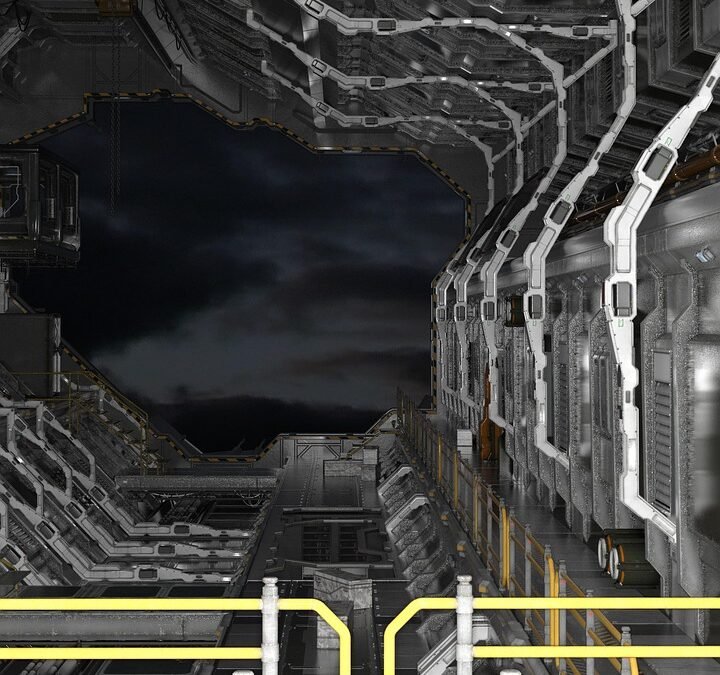The Rise of FPS NFTs: How Collectibles are Changing the game
The gaming landscape has witnessed an unprecedented transformation in recent years, with the rise of NFTs (non-fungible tokens) taking center stage in the world of digital collectibles. Among the various genres of gaming, first-person shooters (FPS) have made a significant impact by integrating NFTs into their ecosystems. This article explores the evolution of FPS NFTs, their implications for the gaming community, and how collectibles are reshaping the gaming experience.
Understanding NFTs and Their Relevance in Gaming
Before diving into the specifics of FPS NFTs, it’s essential to understand what NFTs are. NFTs are unique digital assets verified using blockchain technology, allowing players to own, buy, sell, and trade items in a secure environment. Unlike cryptocurrencies such as Bitcoin or Ethereum, which are fungible and can be exchanged for one another, NFTs are one-of-a-kind and cannot be replicated.
In gaming, NFTs have emerged as a revolutionary way for players to own in-game assets, including characters, skins, weapons, and even virtual real estate. This ownership model opens up new avenues for monetization and enhances player engagement, as gamers can truly own their digital possessions.
The FPS Genre: A Perfect Match for NFTs
The FPS genre is renowned for its immersive gameplay and competitive nature. With titles like Call of Duty, Counter-Strike, and Apex Legends dominating the market, the integration of NFTs into these games has the potential to elevate player experiences. Here are several reasons why FPS games are a perfect match for NFTs:
- Customization and Personalization: Players love to customize their characters and weapons. NFTs allow for unique skins and items that can be traded or sold, making each player’s experience unique.
- Scarcity: Limited-edition NFTs can create a sense of urgency and excitement. Exclusive items can increase in value over time, making them desirable to collectors.
- Community Engagement: Integrating NFTs fosters community interaction. Players can showcase their collections, trade items, and participate in events that highlight their unique assets.
Notable FPS Games Embracing NFTs
Several FPS titles have begun to incorporate NFTs into their gameplay, paving the way for a new era of digital collectibles. Here are some notable examples:
1. Call of Duty: Warzone
Call of Duty: Warzone has taken the gaming world by storm with its battle royale format. The franchise has introduced limited-edition skins and weapon blueprints as NFTs, allowing players to own unique items that can be showcased in their inventories. This integration not only enhances gameplay but also adds a layer of investment for players looking to collect rare assets.
2. CS:GO (Counter-Strike: Global Offensive)
CS:GO has long been known for its skin market, where players buy and sell weapon skins. With the rise of NFTs, the game has started to explore the potential of verifiable digital ownership. By introducing NFTs for rare skins, players can ensure their investments are secure and unique, adding tremendous value to the in-game economy.
3. Valorant
Riot Games’ Valorant has captivated FPS enthusiasts with its strategic gameplay and character-based mechanics. The integration of NFTs into the game could allow players to purchase exclusive skins or agents, creating a more personalized experience. The potential for rare collectibles could further enhance the competitive nature of the game, as players strive to showcase their unique assets.
The Economic Impact of FPS NFTs
The introduction of NFTs in FPS games has significant economic implications. Here’s how they are changing the financial landscape of gaming:
1. New Revenue Streams for Developers
Game developers can monetize their titles in new ways by selling NFTs directly to players. This model allows for continuous revenue generation, as players are willing to pay for unique and exclusive items. Developers can also earn a percentage each time an NFT is resold, creating a sustainable economic model.
2. Player Investment and Value Appreciation
As players invest in NFTs, they are essentially purchasing assets with the potential for value appreciation. Just like traditional collectibles, the rarity and desirability of NFTs can lead to increased market value over time. This investment aspect has attracted a new segment of players who may not be traditional gamers but are interested in the collectible aspect of gaming.
3. Secondary Markets and Trading
The rise of NFTs has led to the emergence of secondary markets where players can trade their assets. This marketplace not only allows players to profit from their investments but also fosters a vibrant community of collectors and traders. As demand for unique items grows, these markets become essential to the overall gaming ecosystem.
Challenges and Concerns
While the rise of FPS NFTs presents exciting opportunities, it also comes with challenges and concerns that need to be addressed:
1. Environmental Impact
One of the primary criticisms of NFTs is their environmental impact due to the energy consumption of blockchain transactions. The gaming community is becoming increasingly aware of sustainability, and developers need to find eco-friendly solutions to mitigate this issue.
2. Accessibility and Inclusivity
The financial barrier to entry for NFTs can be high, potentially excluding players who may not have the resources to invest in collectibles. Developers must ensure that their NFT offerings are accessible to all players, regardless of their economic standing.
3. Market Speculation
The NFT market can be volatile, with prices fluctuating based on demand and trends. This speculation can lead to a bubble, where players may invest heavily only to face potential losses. Developers need to create a stable environment that prioritizes player experience over short-term profits.
The Future of FPS NFTs
As the gaming industry continues to evolve, the future of FPS NFTs looks promising. Several trends may shape their trajectory:
1. Integration with Metaverse
The concept of the Metaverse is gaining traction, where gamers can interact in virtual worlds. FPS NFTs could play a crucial role in these environments, allowing players to carry their unique assets across different games and platforms.
2. Enhanced Interactivity
Future FPS games may incorporate NFTs into gameplay mechanics, where players can unlock exclusive challenges or rewards tied to their collectibles. This interactivity can enhance the gaming experience and encourage players to engage more deeply with the game.
3. Collaborations and Partnerships
We may see collaborations between game developers and artists, musicians, or other industries to create unique NFT collectibles. These partnerships can lead to innovative and diverse offerings, appealing to a broader audience.
Conclusion
The rise of FPS NFTs signals a new era in gaming, one where players can truly own their digital assets and engage in a vibrant marketplace. While challenges exist, the potential for innovation, community building, and economic growth is immense. As players and developers navigate this exciting landscape, FPS NFTs are poised to change the game forever.
FAQs
What are FPS NFTs?
FPS NFTs are non-fungible tokens specifically designed for first-person shooter games, allowing players to own unique in-game assets such as skins, weapons, and characters.
How do NFTs benefit gamers?
NFTs enable gamers to own, trade, and sell unique digital assets, creating a sense of ownership and the potential for value appreciation over time.
Are FPS NFTs environmentally friendly?
Concerns have been raised about the environmental impact of NFTs due to the energy consumption of blockchain technology. Developers are exploring eco-friendly solutions to address these issues.
Can anyone participate in the FPS NFT market?
While the NFT market is accessible, there may be financial barriers for some players. Developers are encouraged to create accessible offerings to ensure inclusivity.
What does the future hold for FPS NFTs?
The future of FPS NFTs is promising, with potential developments including integration with the metaverse, enhanced interactivity, and collaborations with other industries to create unique collectibles.
Discover more from The Meteyeverse
Subscribe to get the latest posts sent to your email.

